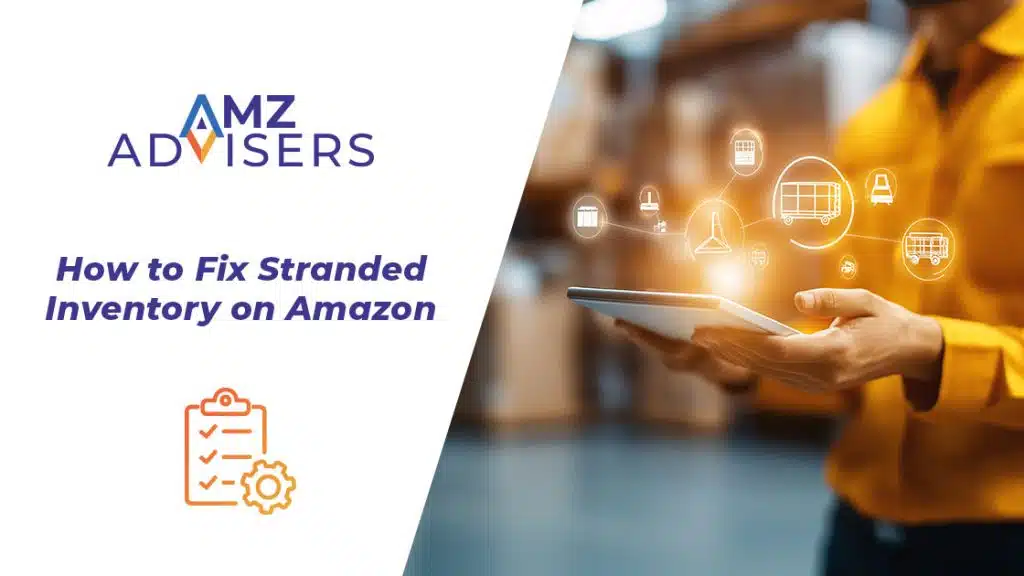New Amazon return fees were established on June 1, 2024. Read on to learn the latest Amazon return fees and how to prevent them.
Even though Amazon is the world’s biggest ecommerce marketplace, it struggles with a high number of returns. Amazon’s average return rate is 21%, increasing since 2020.
Unfortunately, sellers get the most damage during a return. Earlier this year, Amazon imposed higher return fees for Amazon sellers. These fees are called “return processing fees,” and Amazon applies these extra costs when a customer returns an item.
What are the new Amazon return fees? This question isn’t a simple one to answer because these fees vary. Continue reading to know the return fees you can expect to pay and some strategies to decrease the number of returns.
Overview of Amazon’s Return Policy
Most FBA sellers use the Amazon return policy. Amazon allows customers to return items after 30 days of purchase.
Customers initiate the process on their Amazon account and return the item and original packaging to a drop-off area (such as Whole Foods). Amazon may require customers to provide additional information to prevent fraud.
It’s also important to note that there are Amazon items you can’t return.
While most sellers on FBA use Amazon’s return policy, you may choose to open up a longer return window for customers. That won’t prevent Amazon return fees, including Amazon FBA return fees.
How Amazon’s Return Policy Affects Sellers
While the Amazon return policy is lenient for buyers, it can damage sellers in many ways. This is especially true regarding the new Amazon return fees. Here are the many ways that product returns on Amazon affect sellers:
- Fees. The higher Amazon return fees make returns unaffordable for sellers.
- Decreased sales. If a customer must return an item from a seller, they will be less likely to purchase from that brand again.
- Product quality. Sellers are investing in better quality products to minimize the rate of returns.
- Sustainability. Returns often result in wasted packaging, damaging the environment.

What Are the Updated Amazon Return Fees?
On June 1, 2024, Amazon imposed new return fees. The new Amazon seller return fees vary depending on how often you receive returns, product size, and category. If your return rate exceeds the category benchmark, you can expect to incur these return fees.
Size
Amazon’s return fees are in two different size categories: one for clothing and shoes and one for all other products. Here are the rates for apparel and shoes first:
Shipping Weight |
Fee |
Small: 4 oz or less |
$1.65 |
Small: 4 oz – 8 oz |
$1.75 |
Small: 8 oz – 12 oz |
$1.85 |
Small: 12 oz – 16 oz |
$1.95 |
Large: 16 oz – 1.5 lb |
$2.62 |
Large: 1.5 lb – 2 lb |
$2.98 |
Large: 2 lb – 2.5 lb |
$3.33 |
Large: 2.5 lb to 3 lb |
$3.69 |
Large: 3 lb – 20 lb |
$3.89 + $0.10/half lb for anything over 3 lbs |
Large and bulky: 0 – 50 lbs |
$6.74 + $0.38/lb over the first pound |
XL: 0 – 50 lbs |
$40.12 + $.075/lb over the 51 lbs |
XL: 70 lbs – 150 lbs |
$52.45 + $0.75/lb over 71 lbs |
XL: 150 lbs+ |
$157.39 + $0.19/lb over 151 lbs |
These are the rates for non-clothing items:
Shipping Weight |
Fees |
Small: 2 oz or less |
$1.78 |
Small: 2 oz – 4 oz |
$1.84 |
Small: 4 oz – 6 oz |
$1.90 |
Small: 6 oz – 8 oz |
$1.96 |
Small: 8 oz – 10 oz |
$2.02 |
Small: 10 oz – 12 oz |
$2.08 |
Small: 12 oz – 14 oz |
$2.14 |
Small: 14 oz – 16 oz |
$2.21 |
Large: 1 lb – 1.25 lbs |
$3.70 |
Large: 1.25 lbs – 1.5 lbs |
$4.01 |
Large: 1.5 lbs – 1.75 lbs |
$4.32 |
Large: 1.75 lbs – 2 lbs |
$4.63 |
Large: 2 lbs – 2.25 lbs |
$4.66 |
Large: 2.25 lbs – 2.5 lbs |
$4.68 |
Large: 2.5 lbs – 2.75 lbs |
$4.71 |
Large: 2.75 lbs – 3 lbs |
$4.73 |
Large: 3 lbs – 20 lbs |
$5 + $0.05/4 oz over the first 3 lbs |
Large and bulky: 0 – 50 lbs |
$6.74 + $0.32/lb over the first pound |
XL: 0 – 50 lbs |
$26.33 + $0.38/lb over the first pound |
XL: 50 lbs – 70 lbs |
$40.12 + $0.75/lb over 51 lbs |
XL: 70 lbs – 150 lbs |
$52.45 + $0.75/lb over 71 lbs |
XL: 150 lbs + |
$157.35 + $0.19/lb over 151 lbs |
Category
Sellers incur these fees depending on category and return rates. Each category has a different return rate threshold. Here are the most popular categories:
Category |
Return Rate Threshold |
Automotive |
9.10% |
Device Accessories |
11.30% |
Backpacks, Handbags, and Luggage |
12.80% |
Baby |
9.30% |
Beauty, Health, and Personal Care |
5.50% |
Power Tools |
7.10% |
Compact Appliances |
12.60% |
Business, Industrial, and Scientific Supplies |
6.00% |
Consumer Electronics |
11.20% |
Computers |
11.40% |
Electronics Accessories |
8.80% |
Fine Art |
5.60% |
Eyewear |
12.10% |
Furniture |
9.60% |
Full-Size Appliances |
11.90% |
Home and Kitchen |
8.10% |
Grocery and Gourmet |
2.90% |
Lawn and Garden |
7.70% |
Jewelry |
10.80% |
Are There Any Exemptions to Amazon Return Fees?
There are a few exemptions to the Amazon return processing fee. For example, if you ship less than 25 units of a product per month, you won’t incur Amazon return fees on that item. That’s because Amazon only places the return fee on items with a high return rate.
You’ll also be exempt from Amazon return fees if you’re in the FBA New Selection program. Amazon will waive return fees for the first 20 units of your eligible parent ASINs, specifically for new product launches.
Strategies to Reduce Return Fees on Amazon
The best way to avoid Amazon return fees is to avoid returns altogether. Here are some best practices to prevent returns.
Accurate Product Descriptions
Always include accurate product details in the description and bullet points of each listing. Remember the specifications, such as the dimensions and weight of the product.
It’s also best to include the instructions in the listing so customers know what to expect when using the product.
Related content: Product Listing Optimization Guidelines
Use Tools
Amazon offers various tools and programs to help sellers attract more customers. These tools include A+ content to improve listings and reports to track multiple metrics. Sellers will always know their performance and their customer satisfaction rates.
Proper Packaging
Product damage is one of the most common reasons for warehouse returns. Even if the product was in good condition when it left the warehouse, it can sustain damage during shipping.
Sellers can prevent this type of damage by using excellent product packaging. Use a high-quality box or envelope with protective inserts, such as foam padding or bubble wrap, and ensure the item doesn’t touch the walls of the container.
Include High-Quality Images and Videos
Images and videos are integral for customers to get an accurate view of the product before purchasing it. The photos and videos should include the product from all angles and show its use.
Related content: Product Image Requirements
Accurate Labeling
Another common reason why buyers return items is they received the wrong product. Including the correct product ID and ASIN on the label will ensure Amazon’s warehouse workers send the correct product.
Related content: About Amazon Shipping Labels
Have Excellent Customer Support
Great customer service can often prevent a returned item. Let’s say a customer has difficulty assembling a product. Before returning it, they will likely contact you with questions.
Respond promptly and guide them through the assembly. If you don’t respond or don’t give clear instructions, the customer may lose patience and return the item.

FAQs
What’s an acceptable return threshold rate?
An acceptable return threshold rate depends on your product’s category. Frequently returned products have a lower threshold.
What’s the period for the return threshold?
Amazon will consider the number of returned items in a calendar month and the next two months.
Can I see my product’s return rate?
Yes. Log onto Amazon FBA and go to the Returns page. You’ll see your returns thresholds by product category.
Are Amazon Return Fees Holding You Back?
Amazon has a high return rate. Unfortunately, this falls on sellers. Amazon return fees increased in June 2024, increasing a seller’s burden when dealing with returns.
Are you consistently exceeding the return threshold, even when using best practices to prevent returns? If so, something may be holding you back. We can identify any weaknesses in your process and improve your strategy, so your store can achieve new heights.
Author
 Stephanie Jensen has been writing ecommerce content for seven years, and her copy has helped numerous stores rank on Amazon. Follow her on LinkedIn for more insight into freelance writing and creating high-quality content.
Stephanie Jensen has been writing ecommerce content for seven years, and her copy has helped numerous stores rank on Amazon. Follow her on LinkedIn for more insight into freelance writing and creating high-quality content.




